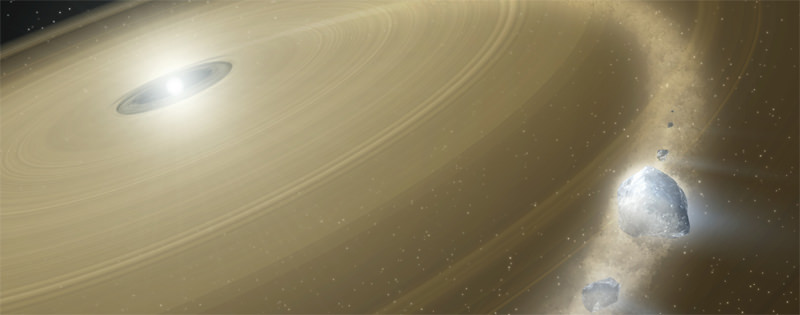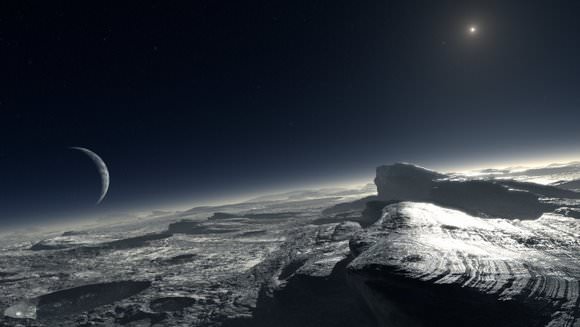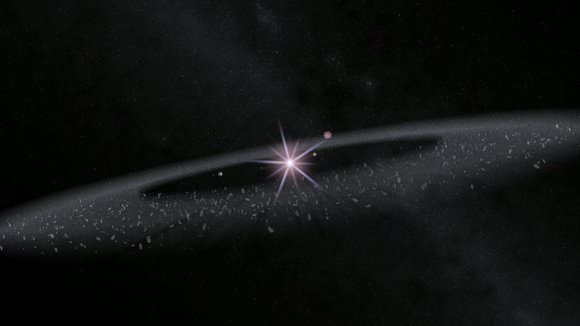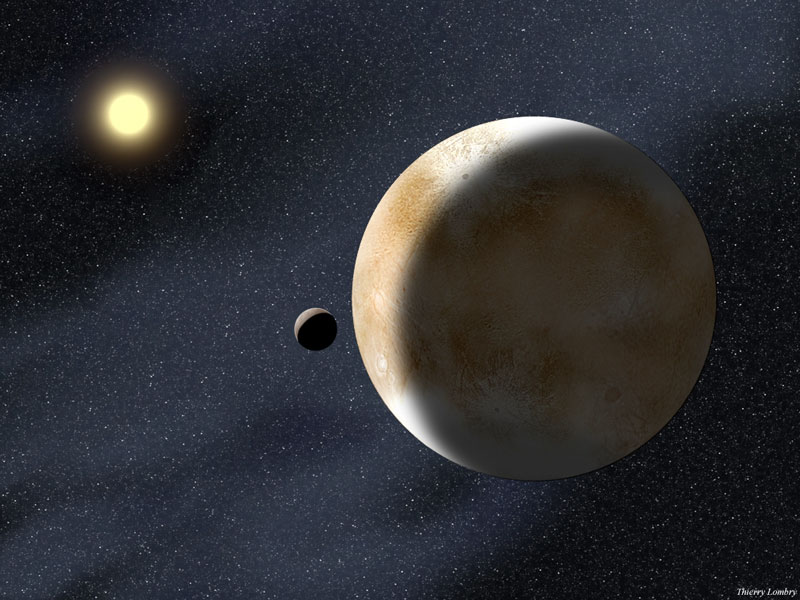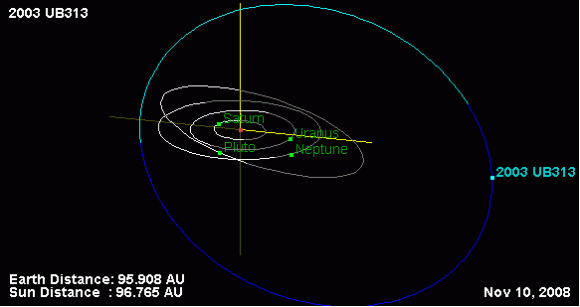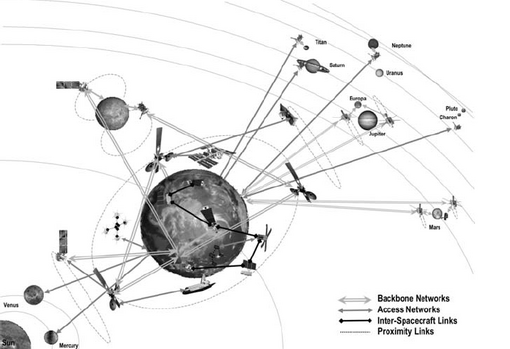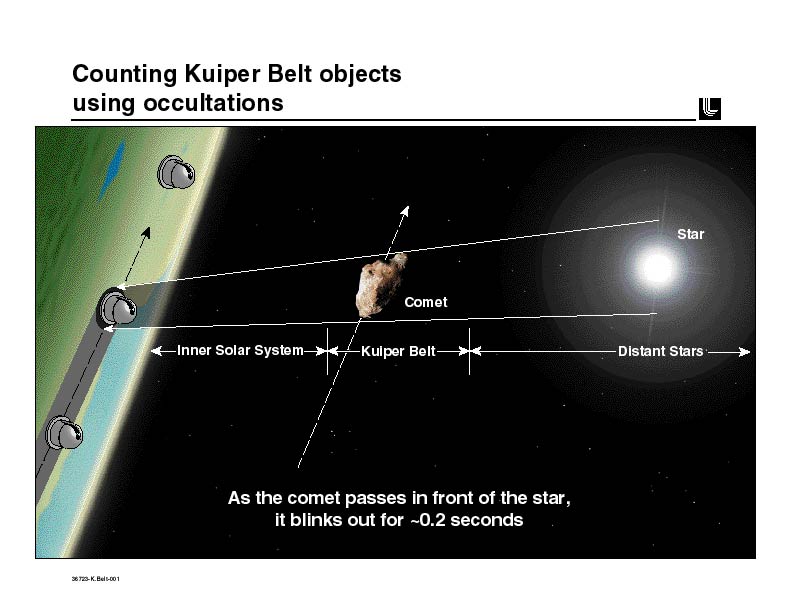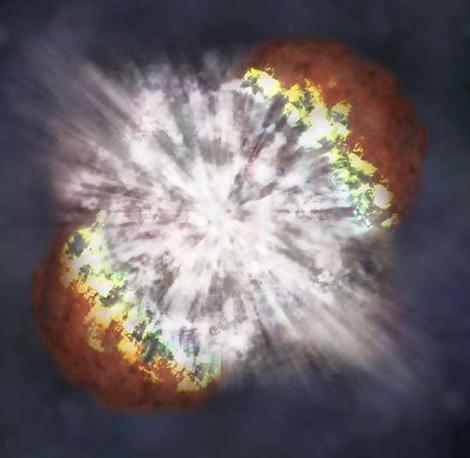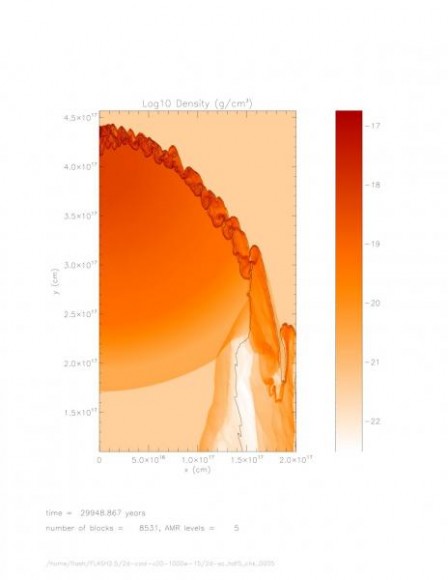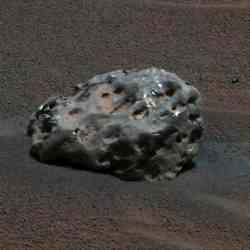[/caption]
What will happen to all the inner planets, dwarf planets, gas giants and asteroids in the Solar System when the Sun turns into a white dwarf? This question is currently being pondered by a NASA researcher who is building a model of how our Solar System might evolve as our Sun loses mass, violently turning into an electron-degenerate star. It turns out that Dr. John Debes work has some very interesting implications. As we use more precise techniques to observe existing white dwarf stars with the dusty remains of the rocky bodies that used to orbit them, the results of Debes’ model could be used as a comparison to see if any existing white dwarf stars resemble how our Sun might look in 4-5 billion years time…
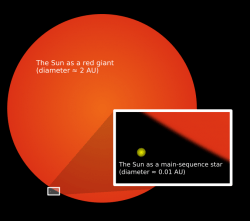
But what happens then? What happens in 4-5 billion years when the supply of hydrogen runs out in the core? Although our Sun isn’t massive enough to entertain the thought of going out in a blaze of supernova glory, it will still go through an exciting, yet terrifying death. After evolving through the hydrogen-burning phase, the Sun will puff up into a huge red giant star as the hydrogen fuel becomes scarce, expanding 200 times the size it is now, probably swallowing the Earth. Helium, and then progressively heavier elements will be fused in and around the core. The Sun will never fuse carbon however, instead it will shed its outer layers forming a planetary nebula.
Once things calm down, a small sparkling jewel of a white dwarf star will remain. This tiny remnant will have a mass of around half that of our present Sun, but will be the size of the Earth. Needless to say, white dwarfs are very dense, intense gravitational pull countered not by fusion in the core (like all Main Sequence stars), but by electron degeneracy pressure.
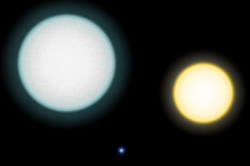
After the Sun has stopped hydrogen fusion in its core, it loses mass as it sheds its outer layers after the red giant phase and subsequent planetary nebula formation. It is estimated that the Sun will lose about 50% of its mass during this time, naturally affecting the Solar System as a whole. As the Sun loses mass, the outer planets (such as Jupiter) will drift outwards, increasing their orbital radii. In the simulation, Debes is very careful to ensure there is a gradual reduction in solar mass to ensure stability in the simulation.
What we are left with is an old Solar System, where little is left of the inner planets (it is likely that anything within the orbit of the Earth will have been swallowed by the Sun as it expanded through the red giant phase). Although the future white dwarf Solar System will seem very alien to present day, some things won’t change. Jupiter’s orbit might have receded with the drop in solar mass, it will remain a planetary heavyweight, causing disruption in asteroid orbits. Using known asteroid data, the motion of these chunks of rocks are allowed to evolve, and over millions of years, they may get thrown out of the Solar System, or more interestingly, pushed closer to the white dwarf. Once the whole system has settled down, resonances in the asteroid belt will become amplified; Kirkwood Gaps (caused by gravitational resonance with Jupiter) will widen, and according to Debes’ simulations, the edges of these gaps will become perturbed even more, making more asteroids available to be tidally disrupted and shredded to dust.

“We have a physical picture for the link between planetary systems and dusty white dwarfs,” Debes said when describing his model in relation to the mysterious dusty white dwarf observations. “Dusty white dwarfs are truly a mystery! We think we know what might be going on, but we don’t have a smoking gun yet.”
However, Debes is getting close to finding a possible smoking gun, he’s basing his model on some of the key characteristics of these ancient dusty remnants to see what the Solar System could look like in billions of years time.
So, where does this dust come from? As the asteroid orbits are perturbed by Jupiter, they may get close enough to be tidally disrupted. Get too close and they will get shredded by the gravitational shear created by the steep tidal radius of the compact white dwarf. The asteroid dust then settles into the white dwarf. The presence of this dust has a very obvious signature in the absorption lines of spectroscopic data, allowing researchers to infer an accretion rate for metal-rich white dwarfs. In Debes’ model, he has set the upper limit to 1016 g/year and a lower limit to 1013 g/year, consistent with observed estimates.
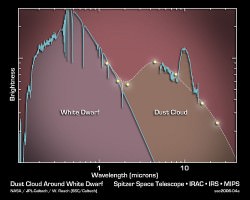
“For G29-38, the canonical dusty white dwarf, they [Koester & Wilken] estimate a total mass of 0.55 solar masses–about what people believe the mass that our own sun will have remaining when it becomes a white dwarf,” Debes added. “But mass estimates are a bit uncertain–I’ve seen estimates ranging from 0.55-0.7 solar masses for this particular white dwarf.”
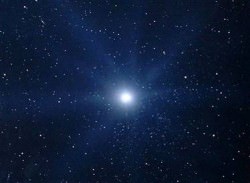
Debes is continuing to make his model more and more sophisticated, but already the results are promising. Most exciting is that we may already be observing white dwarfs, like G29-38 or WD 1257+278, giving us a tantalizing glimpse of what our Solar System will look like when the Sun becomes a white dwarf star, ripping apart any remaining asteroids and planets as they stray too close to the Sun’s tidal shear. However, it also raises the question: if white dwarfs like G29-38 are being fed by the remains of tidally-blended asteroids, are there massive planets shepherding asteroids in these white dwarf systems too?

